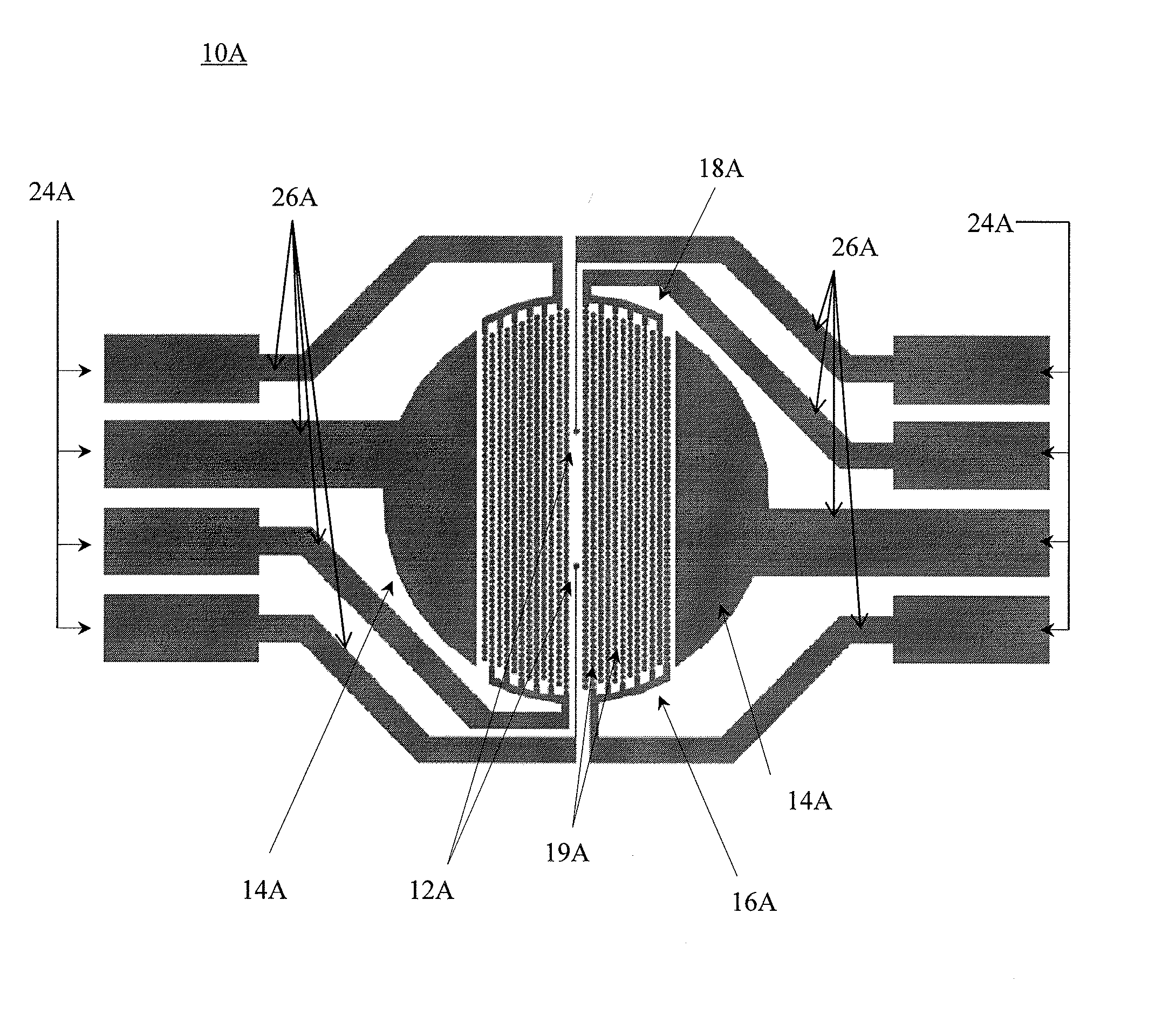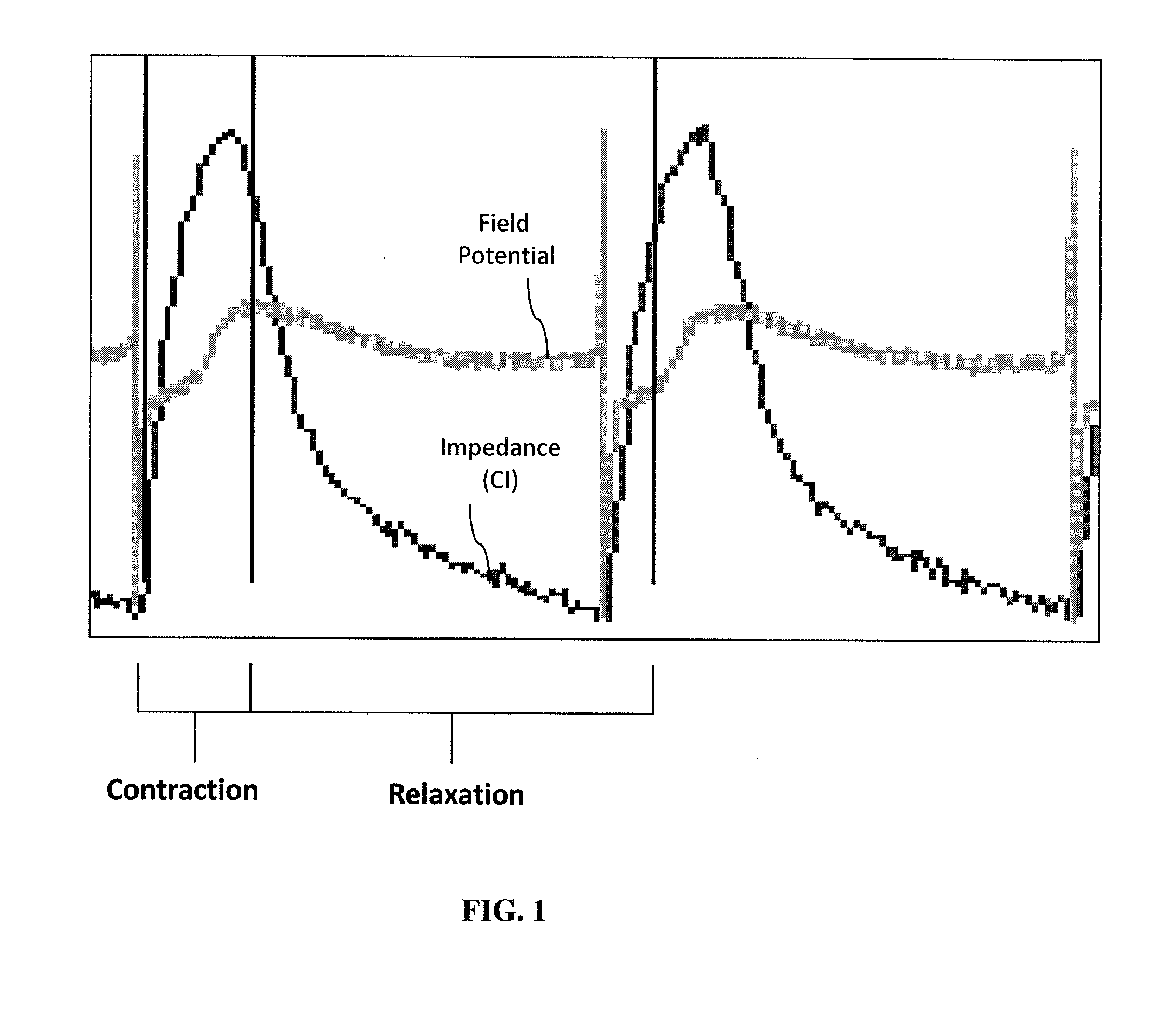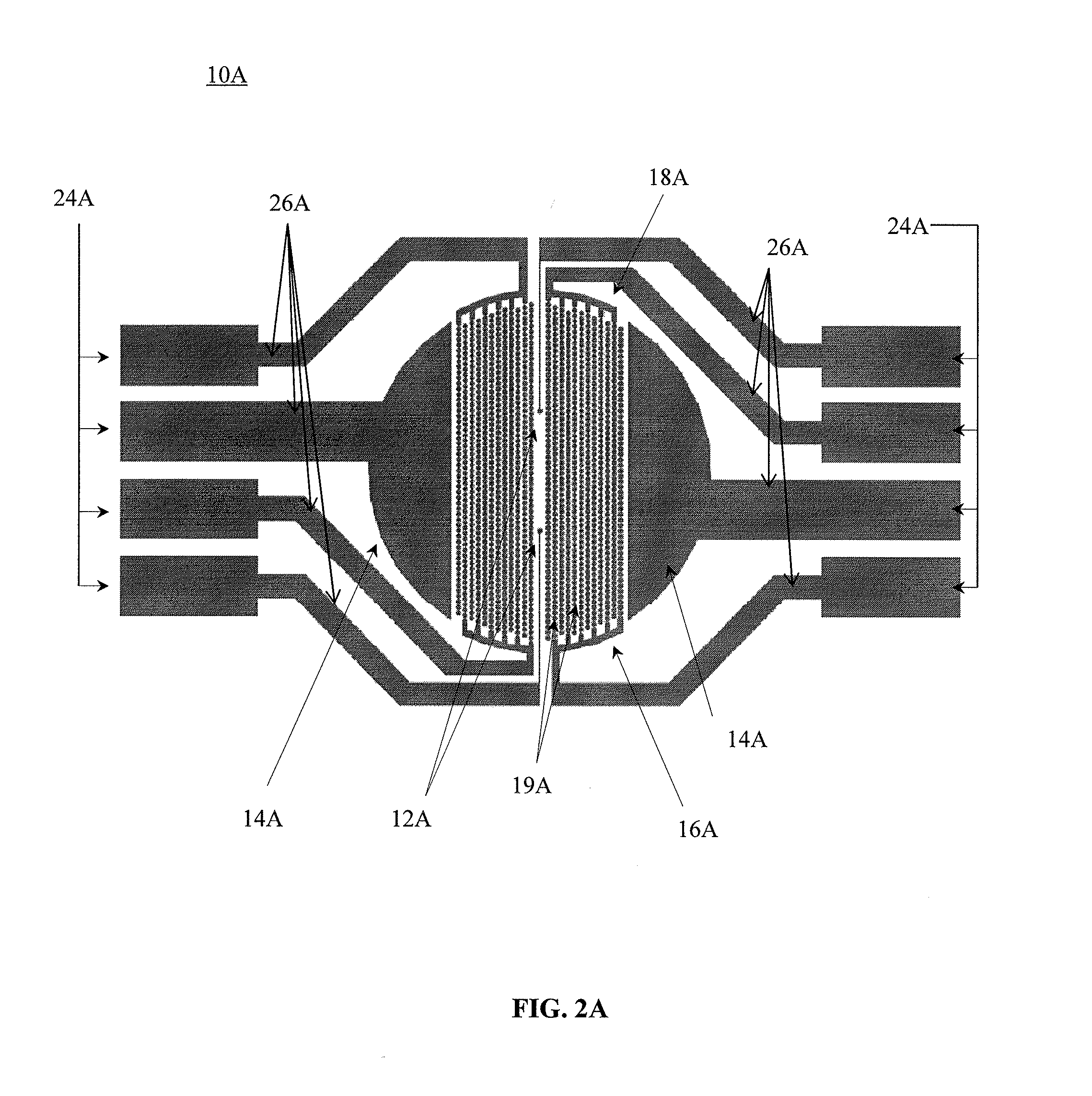System and method for monitoring cardiomyocyte beating, viability, morphology, and electrophysiological properties
a cardiomyocyte and monitoring system technology, applied in the field of cell-based assays, can solve the problems of affecting drug discovery and development projects, increasing their cost, and lack of reliable screening methods capable of monitoring, so as to improve characterization, improve throughput efficiency, and assess the cardiotoxicity of potential drugs
- Summary
- Abstract
- Description
- Claims
- Application Information
AI Technical Summary
Benefits of technology
Problems solved by technology
Method used
Image
Examples
example 1
Specifications of an Exemplary System for Electro-Stimulation, Impedance Measurement and Extracellular Recording
[0174]A system was constructed for electro-stimulation of excitable cells, as well as for impedance measurement and extracellular recording of excitable cells having two electrodes for extracellular recording, and shared electrodes in the form of a pair of interdigitated electrode structures having a circle on line configuration that function both as electro-stimulation electrodes an impedance monitoring electrodes. The system was designed with the following specifications. The hardware system bandwidth was 1 Hz˜2 KHz (−3 dB). The suppression ratio of impedance stimulation signal was >60 dB. The noise level was 10 μV (Vp-p). The system had excellent shielding and electromagnetic compatibility (EMC).
[0175]In regards to the electro-stimulation signal available waveforms are rectangular form, a ramp form, and sinusoidal. The polarity can be set for uni-polarity or bi-polarity...
example 2
Monitoring the Spontaneous Field Potential Firing and Changes in Impedance of Cultured Cells
[0179]HL-1 atria cells were harvested and cultured in wells having a pair of extracellular recording electrodes. FIG. 6A shows results from eight paralleled ECR signals in the HL-1 atria cells at day 7 with 40,000 cells per well, some channels showed spontaneous field potential (FP) firing but no impedance (IMP) signals. As can be seen, the firing is not paced at a regular rate.
[0180]CorAT cells (mouse embryonic stem cell derived cardiomyocytes) were cultured over time. At day 6, with a cell density at 45,000 per well, spontaneous field potentional (FP) firing was detected as well as changes in impedance (IMP) as shown in FIG. 6B.
[0181]While the above experiments demonstrate the usefulness of ECR and impedance monitoring of cells, spontaneous firing and impedance changes were detected at different time points across different samples
example 3
Modulation of Ion Channels while Performing Extracellular Recording and Impedance Monitoring
[0182]CorAt cells were cultured over time and ECR and IMP signals were recorded simultaneously. Different doses of Sotalol were added at day 9 with CorAt cells at a density of 40,000 cells per well. FIGS. 7B-C show results from 200 μM and 400 μM. FIG. 5A is control without Sotalol, FIG. 5B shows treated wells or test wells with 200 μM, and FIG. 5C shows treated wells or test wells with 400 μM.
[0183]Administration of 400 μM sotalol induced a typical EAD and arrythmias which indicating the primarily target of sotalol is the IKr (hERG) as it was well characterized and published in literature. The other ion channels (INa and ICa) were secondarily inhibited; this may due the delay of recovery of membrane potential repolarization, so the available portion of excitable INa and ICa channels were reduced.
[0184]Primary rat cardiomyocytes were cultured over time and ECR and IMP signals were recorded sim...
PUM
| Property | Measurement | Unit |
|---|---|---|
| time | aaaaa | aaaaa |
| diameter | aaaaa | aaaaa |
| diameter | aaaaa | aaaaa |
Abstract
Description
Claims
Application Information
 Login to View More
Login to View More - R&D
- Intellectual Property
- Life Sciences
- Materials
- Tech Scout
- Unparalleled Data Quality
- Higher Quality Content
- 60% Fewer Hallucinations
Browse by: Latest US Patents, China's latest patents, Technical Efficacy Thesaurus, Application Domain, Technology Topic, Popular Technical Reports.
© 2025 PatSnap. All rights reserved.Legal|Privacy policy|Modern Slavery Act Transparency Statement|Sitemap|About US| Contact US: help@patsnap.com



